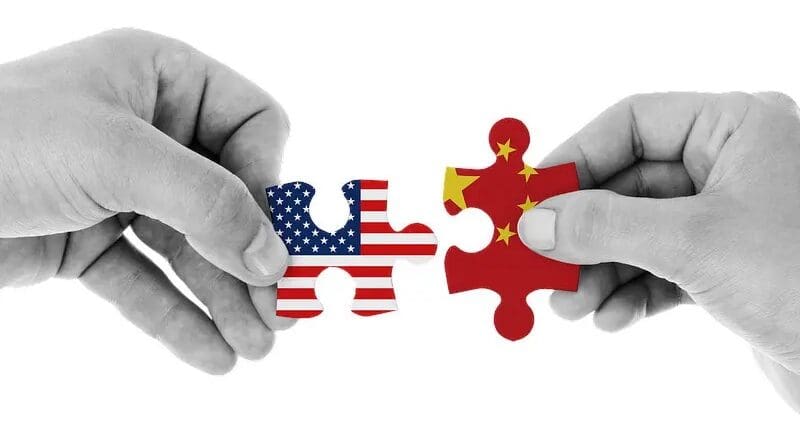China Takes Page From US Cold War Playbook – Analysis
By William H Overholt*
The Belt and Road Initiative (BRI) is a branding exercise for China and its leader and a make-work project for state enterprises. It is also a national security strategy that adapts US Cold War policy to China’s present circumstance.
In America’s Cold War victory there was no grand military battle. The United States created a Washington-centred development network that nurtured America and its allies, with the Bretton Woods system at its core. The system was supported by key domestic institutions and a US dollar that provided global liquidity and a common standard of value.
Meanwhile, the USSR chose a relatively autarkic economy, predatory relations with allies and overwhelming military priorities. The US system flourished and the USSR bankrupted itself — a US economic victory.
After its Cold War victory, a complacent United States allowed the instruments of success to atrophy. Congress repeatedly delayed capital increases for the Bretton Woods institutions. Motivated by dislike for China and other emerging powers, it refused to update governance to reflect the modern global economy. Democrats and Republicans alike responded to the decline of manufacturing jobs by deflecting blame to globalisation and China.
The resulting social crisis undermined public support for America’s successful strategy and worsened tensions with China. Budgets became driven not by strategy but by campaign contributions to Congress. The role of the Bretton Woods institutions declined, creating a vacuum.
China has moved in to fill the gap. Its first institutional initiative, the Asian Infrastructure Investment Bank (AIIB), was tailored for consistency with Bretton Woods. Its leader, Jin Liqun, was driven by determination to create a high-quality institution without the World Bank’s sclerosis.
The US decision to inhibit a role for China in the Bretton Woods institutions and elsewhere proportionate to its economy has consistently enhanced China’s global role and weakened that of the United States.
The BRI emulates the Bretton Woods system. It includes development banks to fund infrastructure and efforts to create common standards in railroads, customs clearance procedures, IT standards and much else. It contains a push for the renminbi to become a global currency, a currency swap system to supplement or replace IMF emergency loans, and institutions to liberalise trade and investment.
But the BRI has since diverged from Chinese leaders’ earlier priority for compatibility with Bretton Woods. The global financial crisis convinced Chinese leaders that the Western economic model is prone to catastrophic collapse. Trump and Brexit convinced them that the Western political model is prone to economic mismanagement.
The United States has three potential responses to the BRI.
First, it can compete. This is a US game. The United States should look to countries like Japan if it wishes to compete successfully. China negotiates a power deal in Indonesia, offering second-rate technology and high prices and demanding a government guarantee. Japan counteroffers with first-rate technology, reasonable prices and demonstrated reliability and feasibility. Japan wins. Indonesia wins.
Second, the United States can compete and co-opt, as it did when it faced economic rivalry with Japan in the 1980s. Japan was competing unfairly in the same ways that China is today: bribes, tied aid, subsidies and cheap interest. By negotiating common standards, the United States and Japan both won. This is still possible with China, because China faces the same problems of competitiveness, sustainability and creditworthiness that Japan did.
Third, the United States can stand on the sidelines and whine. So far, this has been Washington’s main response.
Often the United States wins even when the BRI succeeds. When successful, systems like Bretton Woods or the BRI stabilise countries, reducing the risk of war or terrorism. In the 1970s, it appeared that Bangladesh was going to be a failed state. Instead, the textile industry spilt over from China, employing millions and stabilising the country. While the factories moved from China, the largest ownership of those factories was American. Bangladesh’s relative stability is a joint China–US national security success.
The BRI mostly services the parts of the world least affected by Bretton Woods successes: Central Asia, the Middle East and Africa. In Africa, it is quite successful — 138 countries have formally joined and many others collaborate. But China is discovering that it has finite financial resources. Inattention to creditworthiness has created bad debts for China’s banks. Most lending has eschewed the AIIB’s standards. China’s predatory technology policies and protectionism have elicited a growing pushback.
That said, the BRI is riding and accelerating the integration of Eurasia and the emergence of Africa. Its globally networked strategy is more sophisticated than Bretton Woods’ mostly bilateral vision.
China is playing the right game. Why is the United States failing to play the right game when its Cold War strategy delivered the most successful geopolitical outcome in history?
Part of the problem is that scholars have failed to articulate the post-war geoeconomic game. They preoccupy themselves with pre-World War II military conflicts without acknowledging that post-World War II leadership depends on a rebalancing toward economic priorities and a non-zero-sum mentality. But above all, peacetime resources are allocated by congressional lobbying — not by strategy.
While the BRI has profound flaws and contradictions, as long as China has the only modern national strategy of any major power it will continue to make gains at the United States’ expense.
*About the author: William H Overholt is Senior Research Fellow at the Harvard Kennedy School. He is author of The Rise of China, China’s Crisis of Success and America and Asia: The Transformation of Geopolitics (Cambridge University Press, 2008).
Source: This article was published by East Asia Forum. An extended version of this article appears in the most recent edition of East Asia Forum Quarterly, ‘How China is changing’, Vol. 12, No. 4.

